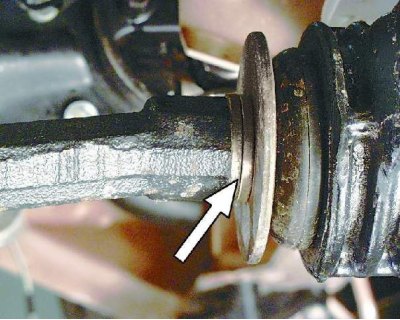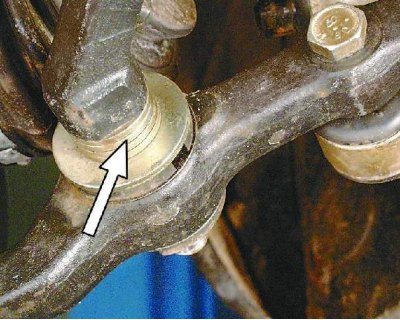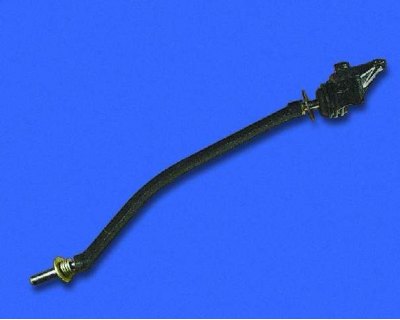Attention! If, after replacing the stretch, the car began to pull to the side while driving, contact a specialized workshop to diagnose the front suspension, be sure to inform the repairman that the stretch was changed.
1. Raise and place the front of the vehicle on stands. Remove the wheel.
Brake the vehicle with the parking brake and place wheel chocks under the rear wheels ("shoes").
Loosen and tighten the wheel bolts only with the vehicle on the ground. Bolt tightening torque 65–95 Nm (6.5–9.5 kgf·m).

2. Loosen the front brace nut.

3. Loosen the rear brace nut.

4. Loosen the three nuts securing the brace bracket.

5. Be sure to count and record the number of shims from the front...

6....and the back ends of the stretch.

7. Finally unscrew the fastening nut and remove the brace.
Notes:
- Examine the stretch carefully. If it is bent or there is damage to the rubber-metal hinges or aging, swelling or loss of elasticity of the rubber, replace the damaged parts.
- Often, when struck, the stretching bracket bursts. If the bracket is damaged, replace it.
- Replacing the rubber-to-metal strut joints pressed into the bracket and front suspension arm requires a special tool and skill. To perform this operation, we recommend contacting a service station.

8. Finally unscrew the nut of the front brace fastening and remove the brace from the bracket.

9. Install the new brace in reverse order. At the same time, install the same number of shims from the front...

10.... and the rear ends of the stretch, how much was before removal.
11. After lowering the car to the ground, swing it strongly several times and tighten it with the appropriate torques: nuts for attaching the extension to the lever and to the bracket - 160–180 Nm (16.0–18.0 kgf·m), nuts for attaching the bracket to the body - 43–53 N·m (4.3–5.3 kgf·m). After a run of 100 km, re-tighten these threaded connections to the required torque.
